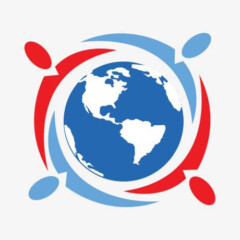Submitted 2012
In June 2008, when I first woke up with a pain in back of my right leg, I assumed it was a pulled muscle. And although I was a bit bewildered by it, I tried not to worry. However, as the days progressed, it became more painful, achy, and tender; walking became increasingly difficult.
The pain initially felt like it was coming from my calf, then behind my knee, and as time passed it seemed to travel down my leg. In my ignorance, I thought the pain was working itself down and out, so it must be improving.
The pain lasted almost two weeks before I finally went to see a doctor, late one Friday afternoon. I later discovered, I was lucky to have finally sought medical attention before boarding a cross-country plane to Toronto the following Monday morning. Instead of flying, I ended up in the Emergency Room. Not only did I have deep vein thrombosis (DVT) located from above my right knee to my ankle, but while being treated as an outpatient at the hospital, I developed a small pulmonary embolism (PE). I have been told, many times over, that I am lucky to be alive and lucky I did not board that plane.
After completing my warfarin therapy last September, I requested hereditary testing. My father, who passed away from congestive heart failure last year, had a history of both arterial and venous clotting. He was prescribed a lifetime of warfarin use (which we had always attributed it solely to his heart disease). I tested positive for Thrombophilia, specifically Factor V Leiden, which increases the tendency of my blood to clot. It turns out that I inherited this genetic condition from my father, who never knew he had it.
When all of this happened initially, I had never heard of DVT, its risk factors (some of which I had), or its symptoms. After my diagnosis, other than anticoagulation information, I had no other take-home resources about DVT, so I began to scour the Internet. It was with shock that I realized that every year more people in America die of DVT than breast cancer, AIDS, and motor vehicle accidents combined. I was also completely surprised by the lack of Canadian resources or organized support. As an adult educator I felt it was my moral responsibility to take responsibility and do something to help.
My mission then became two-fold:
• To raise public awareness and education, so that others may learn the signs and symptoms of DVT and PE.
and
• To be a patient advocate, supporter, and provider of resources.
I promptly contacted the North American Thrombosis Forum (NATF) and was pleased to join as an Advocacy Committee member in September 2008, while attending the Annual Summit.
The next month I started the DVT Support Group of the Lower Mainland, the first known, in-person, support group in Canada. Membership is for anyone who:
• Has or had DVT and/or PE
• Has a blood disorder (Thrombophilia—such as Factor V Leiden) that may increase the risk of developing a DVT
• Is currently taking anticoagulants
• Would like to raise public awareness
• Has family or friends with VTE or
• Anyone who wants to learn about risk factors, symptoms, and prevention
Our group is small but growing rapidly. We now have 52 members (28 online and 24 offline), with ages ranging from 14 to 90. They are largely from British Columbia, but we also have a few members from Alberta, Ontario, and the United States. We receive patient referrals from the Anticoagulation Clinic of Burnaby Hospital (where I received my treatment) and from the new Thrombosis Program of Vancouver General Hospital (the Director, Dr. Agnes Lee, who I met through NATF in 2008). In fact, 18 of our newest members came from the Thrombosis Program’s very successful one-year celebration on March 17, with which our group was proud to be involved.
We provide several benefits for our members:
• A website through www.meetup.com that provides: information, a large number of relevant resource links, a message board, intra-email, an RSVP system and more. We are also on Twitter, and one of our members has started a DVT Facebook group.
• As “meet-up” organizer I send each new member hard copy resources, kindly provided by or purchased from affiliate organizations in the U.S.
• We hold a free “meet-up” every month with the following format: discussion, questions and answers, news and resources, and periodic guest speakers based on member needs. Minutes are taken (excluding confidential sharing) and e-mailed to all members, allowing those who are unable to attend to feel included.
While these small steps may sound commonplace to our U.S. neighbors (where great DVT organizations are in place), in Canada it’s a big step, working to seal a large gap that desperately needs to be filled. It’s truly a grassroots start, but great things are often achieved from humble beginnings.
